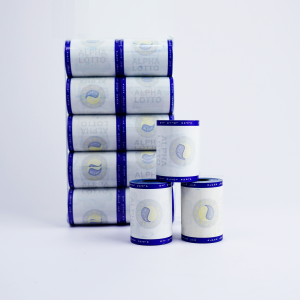Thermal paper is a widely used paper coated with chemicals that changes color when heated. This unique property makes it ideal for use in a variety of applications including receipts, labels and tickets. To understand the chemical composition of thermal paper, it’s important to delve into the key ingredients that allow it to perform its intended function.
The main chemical component of thermal paper is heat-sensitive dyes. This dye is usually a colorless compound that undergoes a chemical reaction when heated, causing a visible color change. The most commonly used dyes in thermal paper are leuco dyes, which are known for their reversible color-changing properties. When thermal paper is heated, the colorless dye undergoes a process called thermochromism, causing it to change from a colorless state to a colored state. This color change is what creates visible images and text on thermal paper.
In addition to dye, thermal paper also contains developer chemicals. A developer is usually a colorless acidic compound that reacts with the dye when heated, causing the dye to change color. Developer plays a vital role in the thermal printing process, promoting the color change of the dye and ensuring that printed images and text are clear and legible.
Additionally, thermal paper has a protective coating that helps protect printed images and text. This coating is usually made from a combination of chemicals such as waxes and resins to provide a protective layer on the printed surface. The protective coating not only helps prevent prints from smudging and fading, but also enhances the overall durability of thermal paper.
It’s worth noting that the chemical composition of thermal paper can vary depending on its intended use. For example, thermal paper used for receipts may have a different chemical composition than thermal paper used for labels or tickets. Manufacturers can tailor the chemical composition of thermal paper to meet specific requirements, such as fade resistance, water resistance, or compatibility with different printing technologies.
While thermal paper offers many advantages, including fast printing and low maintenance costs, it must be handled with care due to its chemical composition. Exposure to certain chemicals or extreme temperatures can affect the performance and lifespan of thermal paper. Proper storage and handling methods are important to ensure thermal paper remains in optimal condition for use.
In summary, understanding the chemical composition of thermal paper is critical to understanding its unique properties and applications. The combination of thermal dyes, developer chemicals, and protective coatings enable thermal paper to deliver high-quality, instant print results. With a deep understanding of the chemical composition of thermal paper, users can make informed decisions about its use and storage, ultimately maximizing its effectiveness in a variety of printing applications.
Post time: Mar-20-2024



